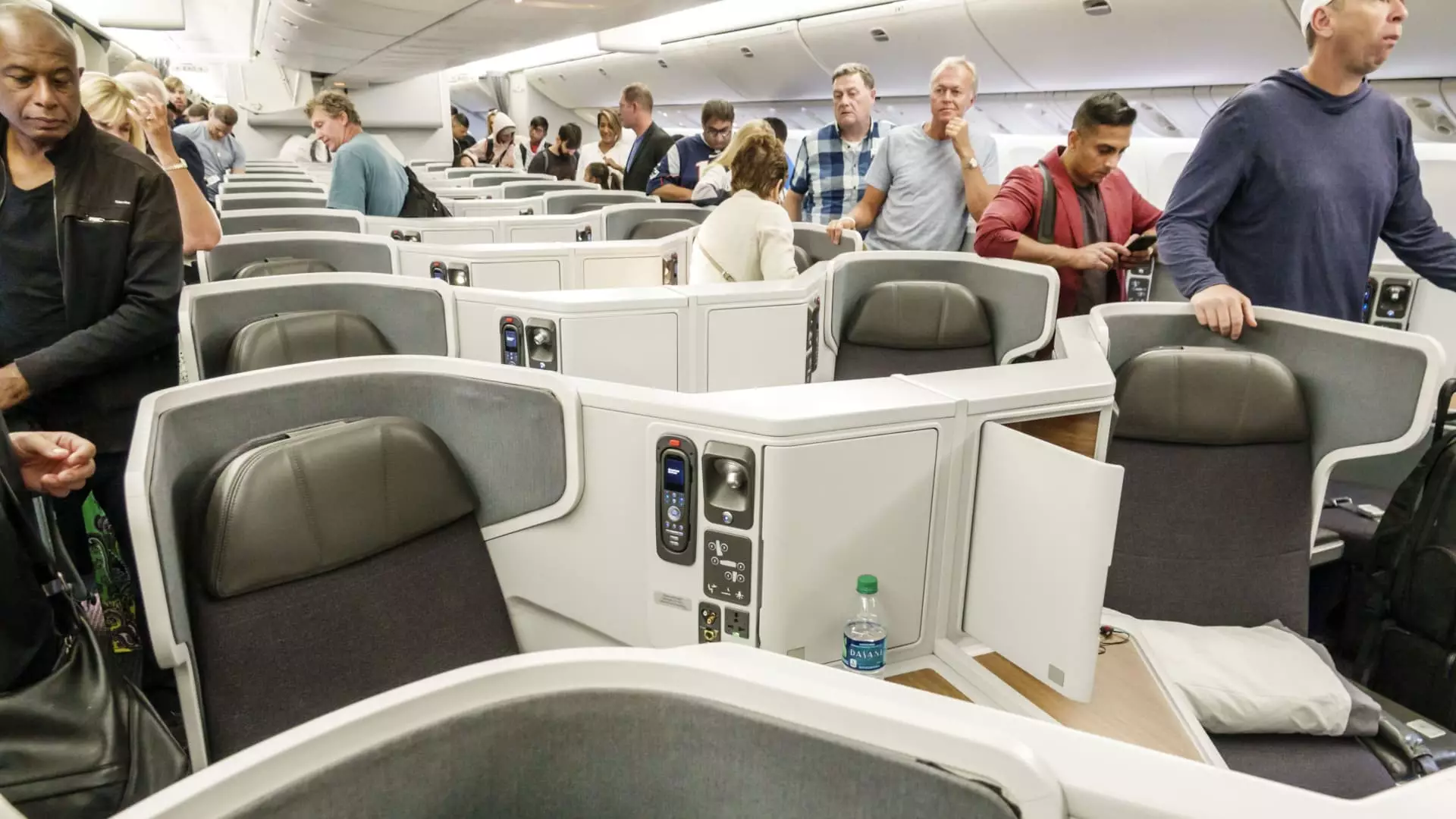Traveling by air has experienced a seismic transformation since the onset of the pandemic, particularly in the evolving preferences of passengers. The inclination toward cheaper seats is fading as airlines witness a surge in demand for seats at the front of the aircraft. This newly risen enthusiasm for premium seating has not only shifted revenue dynamics but also intensified competition among frequent flyers for coveted upgrades.
The pandemic instilled a craving for comfort among travelers. Those who may have previously settled for budget-class tickets are now willing to invest in a more spacious flying experience, as evidenced by the notable rise in bookings for first-class and business-class seats. Airlines are responding to this trend by increasing their capacity and diversifying offerings, leading to a decrease in availability for travelers seeking free upgrades to these premium spots.
Anticipating a strong recovery, airlines predict that the upcoming holiday season will set new records for passenger traffic. This inflow of travelers will exacerbate competition for seats in premium classes, as more frequent flyers equipped with elite status flood the boarding lines with hopes of upgrading. According to industry reports, U.S. airlines are poised to see a 1% increase in capacity during the first quarter compared to the previous year, affirming that travel demand remains robust year-round.
Airlines are navigating a complex balance between profitability and customer satisfaction. The revenue generated from premium cabins has become crucial for maintaining operations, with a marked change in the number of passengers purchasing tickets in the front sections of planes. For instance, a round-trip journey from Newark to Los Angeles presented stark disparities in pricing, with tickets ranging from $347 in economy to a hefty $1,791 in Polaris class. The economic implications are significant; with estimated figures suggesting a considerable percentage of airline revenues now coming from premium classes.
Recent changes in loyalty program structures exemplify the industry’s shift towards monetization over mere mileage accrual. Airlines have modified requirements for elite status, rewarding spending rather than travel distance, which has significantly increased the financial threshold that frequent flyers need to meet. This has caused a ripple effect in customer loyalty approaches, driving more business to airlines that respond in kind: by ensuring that a portion of their capacity is reserved for those willing to pay extra for amenities.
The trend toward premiumization is not limited to legacy carriers alone. Budget airlines are also recalibrating their business models by introducing enhanced seating options. For instance, Frontier Airlines aims to upgrade its Airbus fleet with more spacious first-class seats, while JetBlue and Alaska Airlines are similarly enhancing their premium offerings. This industry-wide phenomenon underscores the recognition that travelers are increasingly favoring the luxury of comfort over mere financial savings.
Airlines are realizing the benefits of investing in upgraded cabins, improving customer service while also amplifying income in an era when operational costs continue to rise. Increased demand for premium cabins is altering the traditional landscape of air travel, where a greater share of revenue is derived from those willing to pay for an upscale experience, rather than merely relying on elites chasing upgrades.
As airlines vie for customer attention, rectifying cabin space between economy and premium classes has become an arduous task. With airlines increasingly recognizing that more passengers are seeking out higher-end travel experiences, they are retrofitting older aircraft models to include modern seating arrangements and amenities.
This competitive landscape fosters innovation in the sector, with airlines rolling out features such as sliding doors and enhanced in-flight entertainment systems in business-class cabins. The focus on catering to premium customers has been acknowledged as necessary for profitability. As one industry expert noted, airlines are now incentivizing upgrades in ways that reflect the luxury retail market, suggesting a notable evolution in consumer expectations.
As the air travel landscape continues to evolve, there is a palpable shift from budget-friendly models to a higher emphasis on comfort and premium services. With airlines recognizing a cultural shift among younger travelers who prioritize premium experiences, the strategies employed by airlines are adapting in real-time to meet these burgeoning demands. The industry may not entirely abandon its economical roots, but the winds of change are evident, and the trajectory seems firmly set toward an air travel experience that mirrors the expectations of a more affluent clientele.
Ultimately, as airlines elevate their services and offerings, the future of air travel appears more luxurious—a reality that reflects not only changes in consumer behavior but also a broader transformation in how we view and experience the skies.

